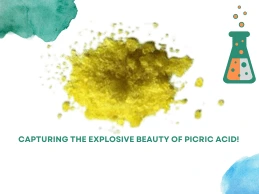Introduction
It is a vibrant yellow crystal and explosive nature, picric acid captivates industries worldwide. In this post, we offer you to read the endless possibilities of picric acid as we unravel its chemical wonders.

Properties and Synthesis
The synthesis of picric acid involves a chemical process utilizing concentrated sulfuric acid and concentrated nitric acid to derive this organic compound. Through the reaction, nitro groups selectively attach themselves to the ortho and para positions, resulting in the distinctive yellow crystals known as picric acid. An alternative method for synthesizing picric acid involves the nitration of phenol sulfonic acid obtained by heating phenol sulfonic acid.

Laboratory Procedure for Synthesis of Picric Acid
Safety precautions: Make sure you are wearing the correct type of personal protective gear (PPE), such as gloves, goggles, and a lab coat, before beginning the procedure. Work in a space with good ventilation or under a fume hood.

Chemicals and equipment: Prepare the necessary chemicals & equipment for the procedure. This consists of phenol, concentrated sulfuric & nitric acids, a beaker or other appropriate vessel for the reaction, an ice bath to regulate temperature, a stirring device for blending, and a thermometer for keeping track of the reaction’s progress.

To initiate the nitration of phenol sulfonic acid, begin by preparing phenol sulfonic acid. Heat phenol with concentrated sulfuric acid to obtain phenol sulfonic acid. Subsequently, cool the phenol sulfonic acid in an ice bath.
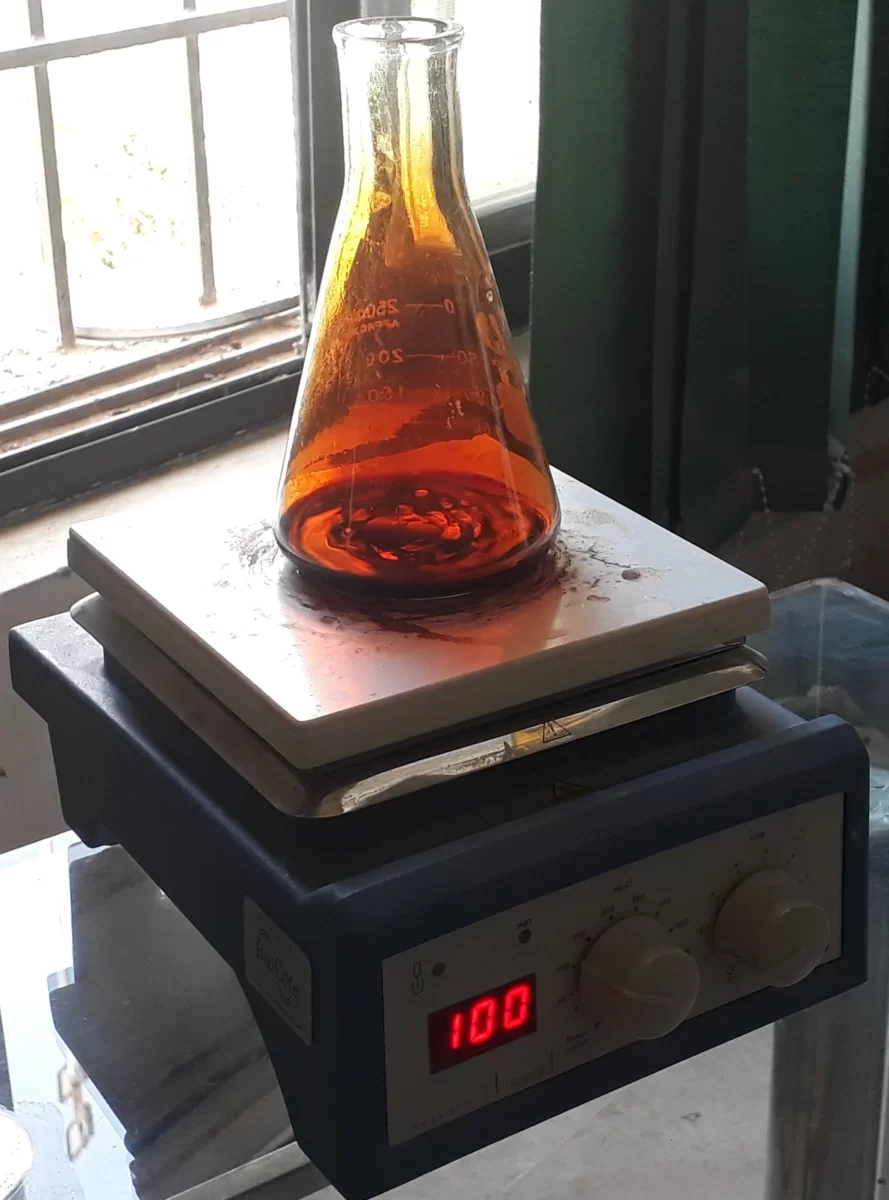
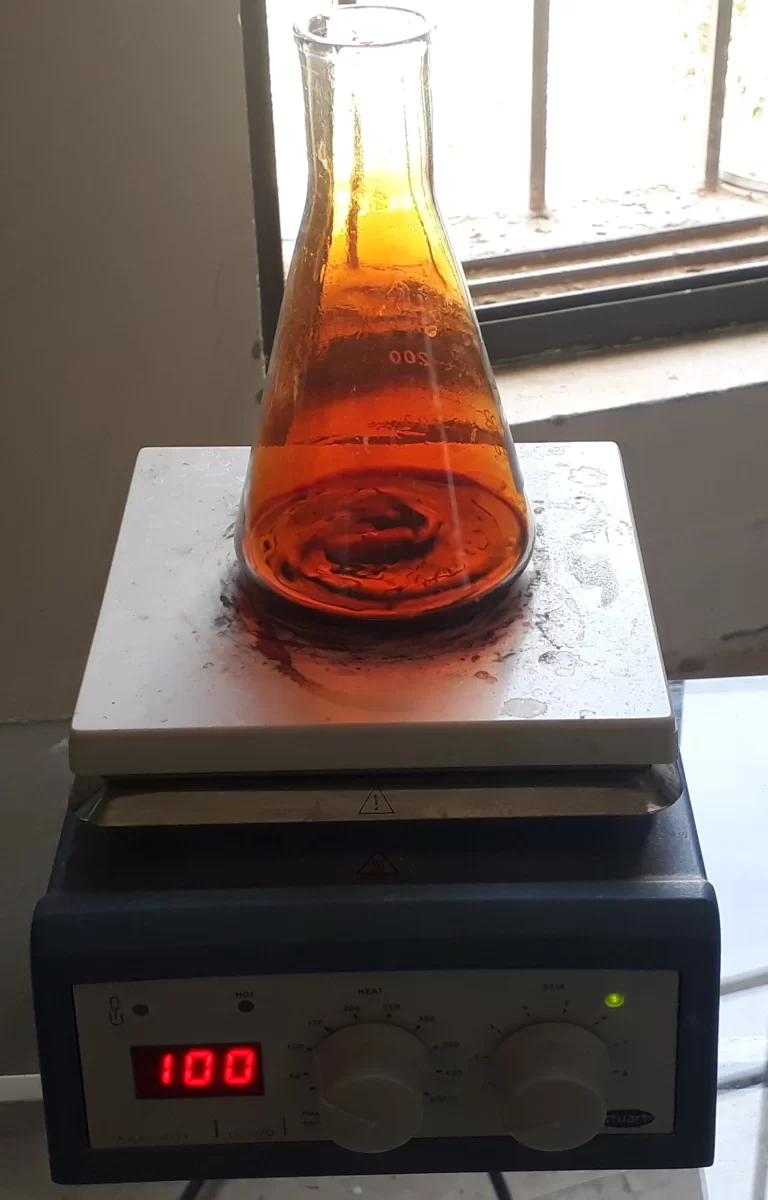
Nitration reaction: Gradually incorporate concentrated nitric acid into the chilled phenol sulfonic acid, ensuring continuous stirring throughout the process. Keep the temperature of the reaction mixture below 10°C (0°C – 5°C) by utilizing the ice bath. This will lead to nitration, causing the production of picric acid.


Crystallization: After completing the nitration, allow the reaction mixture to warm up to room temperature. Crystals of picric acid will start to form. You can aid the crystallization process by scratching the walls of the container with a glass rod.

Filtration and washing: Filter the crystals using a Buchner funnel or filter paper. Wash the collected crystals with cold water to remove any impurities or residual acids. Ensure the crystals are fully dried after washing.
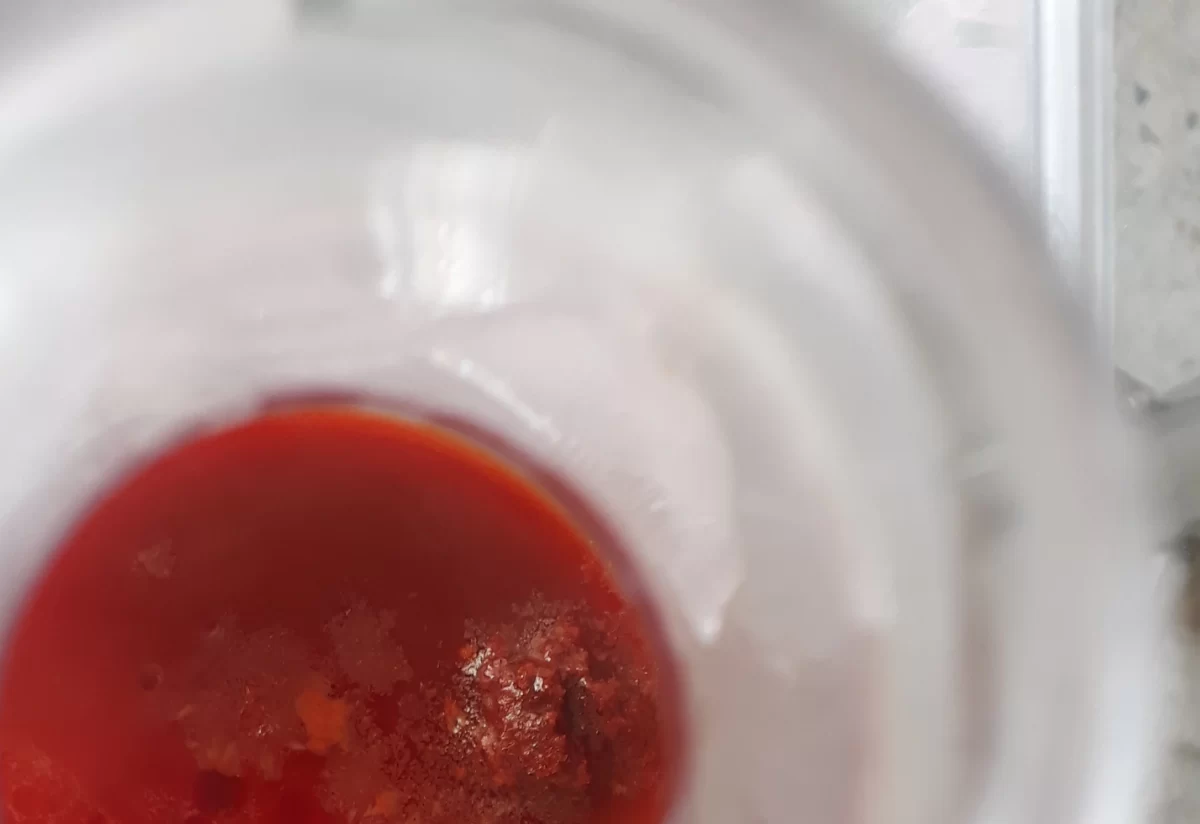
Storage: Transfer the dried picric acid crystals to a suitable storage container. Ensure that the container is tightly sealed and stored in a cool and dry location, keeping it away from heat and any potential sources of ignition.
![]() Please note that working with concentrated acids & performing nitration reactions can be hazardous. It is crucial to have proper training & follow all safety protocols when conducting such experiments.
Please note that working with concentrated acids & performing nitration reactions can be hazardous. It is crucial to have proper training & follow all safety protocols when conducting such experiments.
Applications of Picric Acid
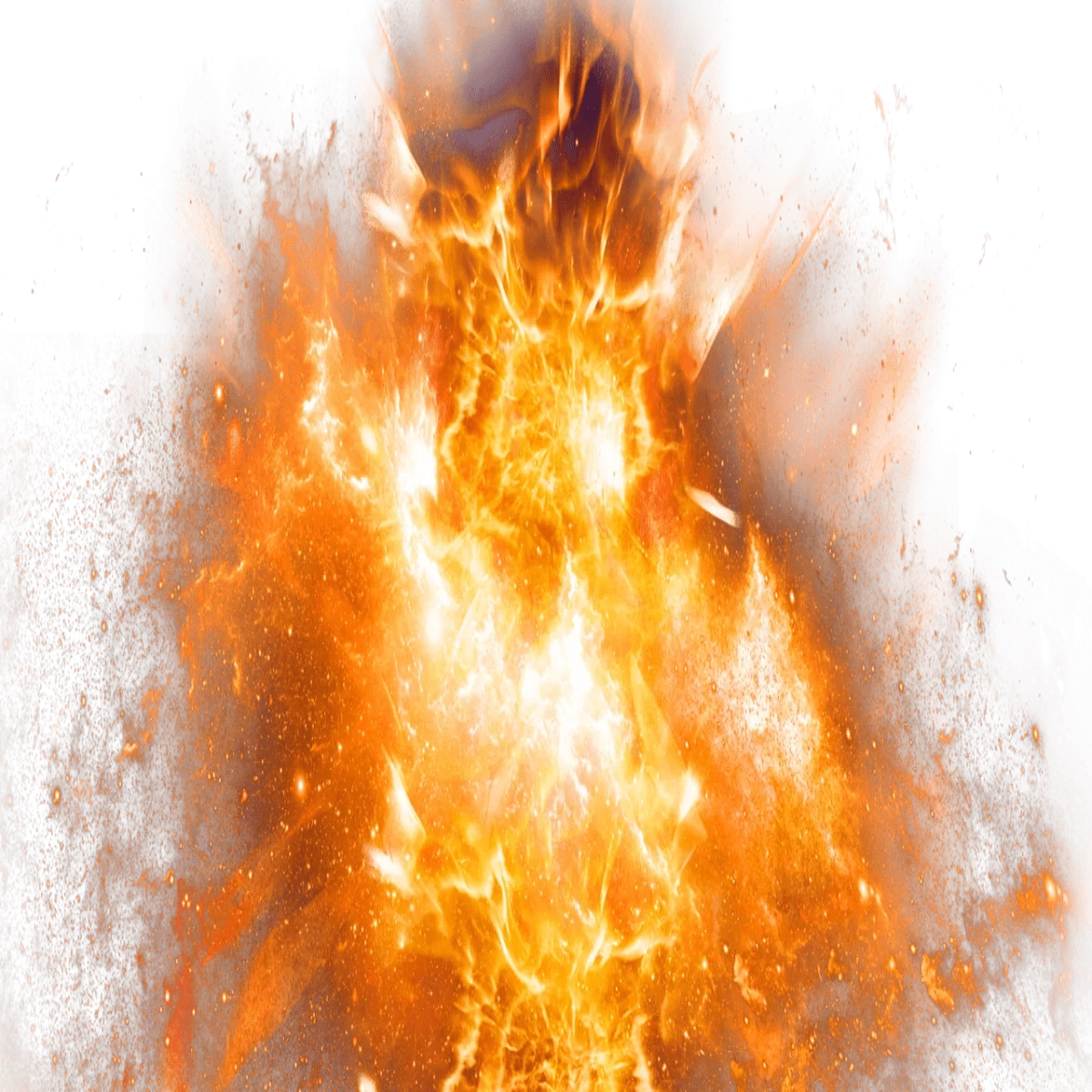
High Explosives
Empowering Military Applications: Picric Acid as an Explosive
Picric acid finds significant use as an explosive component in military applications. Its inclusion in the production of explosives and rocket fuel has cemented its role in the defence industry.

Dye Production
Vibrant Hues and Textile Marvels: Picric Acid in Dye Synthesis
The realm of dyes owes a vibrant debt to picric acid. Its significant contribution to dye synthesis has enabled the creation of coloured glass and textile dyes, revolutionizing the textile industry.

Photographic Chemicals
Capturing Moments with Clarity: Picric Acid in Photography
Picric acid acts as a sensitizer in photographic emulsions, enhancing the sensitivity of film or paper to light. This property has been harnessed in traditional photography to capture images with improved clarity and detail.

Industrial Applications
Beyond Boundaries: Picric Acid’s Role in Industries
Picric acid’s versatility extends beyond explosives and dyes. Its applications encompass diverse industrial processes, including the manufacturing of explosives, matches, electric batteries, and the etching of copper. Moreover, it serves as a precursor in the production of picramic acid and chloropicrin, as well as an antiseptic in specific applications.

Organic Chemistry
Aiding Identification and Characterization: Picric Acid in Organic Chemistry
In the realm of organic chemistry, picric acid facilitates the formation of crystalline salts called picrates. These picrates serve as invaluable tools for identification and characterization in chemical reactions and analysis.

Historical Significance and Safety Considerations
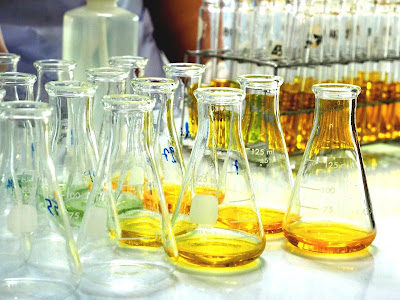
Historical Significance
Tracing the Origins: The Story of Picric Acid
The history of picric acid dates back to 1799 when French chemist Jean-Joseph Welter first produced it by treating silk with nitric acid. It was later discovered that potassium picrate, a derivative of picric acid, possessed explosive properties. Interestingly, chemists only recognized the explosive nature of picric acid itself in 1830.

Safety Considerations
Handling with Care: Safety Precautions for Picric Acid
While picric acid offers numerous benefits, it is crucial to handle it with the utmost care due to its toxic nature. Exposure to picric acid through ingestion, inhalation, or skin absorption can have detrimental effects on health. Inhaling picric acid dust has the potential to cause damage to the lungs, while prolonged or repeated exposure can result in harm to the liver or kidneys. It is crucial to prioritize safety by taking appropriate precautions in the handling and storage of this compound.

Conclusion
Picric Acid: An Organic Marvel Pushing Boundaries
Picric acid serves as a testament to the remarkable capabilities of organic compounds. Its explosive properties have made it indispensable in military applications, while its involvement in dye production, photography, and industrial processes showcases its versatility. As we continue to explore the boundaries of chemistry, picric acid remains a noteworthy compound—an intriguing substance commanding respect.

FAQs
What is picric acid?
Picric acid, which is also referred to as 2,4,6-trinitrophenol (TNP), is an organic compound renowned for its explosive characteristics. It finds its main application in the production of explosives, dyes, and pharmaceuticals.

How is picric acid prepared?
Picric acid is created by the chemical process of nitration. This procedure involves treating phenol with a strong nitric acid & sulfuric acid solution. Picric acid crystals are formed as a result of the reaction.

What are the common uses of picric acid?
Throughout its history, picric acid has gained extensive usage as an explosive substance, specifically in military applications. Moreover, it has been employed as a yellow dye in the textile industry, as a reagent in chemical laboratories, and as an ingredient in select pharmaceutical formulations.

What are the safety precautions associated with picric acid?
Picric acid is highly explosive and should be handled with extreme care. It is sensitive to shock, friction, and heat. Proper storage and handling procedures, including using appropriate containers and protective equipment, are essential to ensure safety.

What are the potential hazards of picric acid?
Apart from its explosive nature, picric acid may pose health hazards. Due to its toxicity, picric acid has the potential to induce skin irritation, cause damage to the eyes, and lead to respiratory issues. It is crucial to avoid ingestion or inhalation of picric acid, and in the event of exposure, immediate medical attention should be sought to address any possible health consequences.

